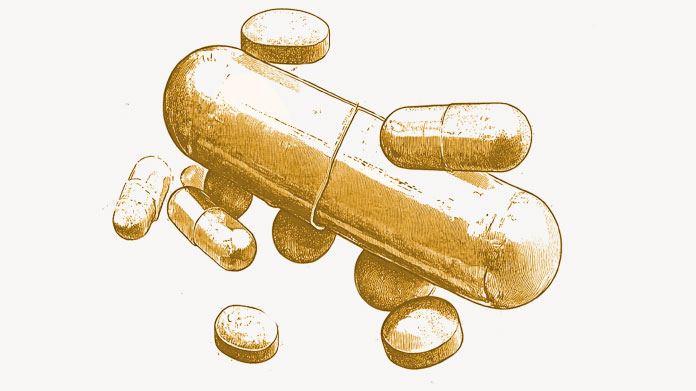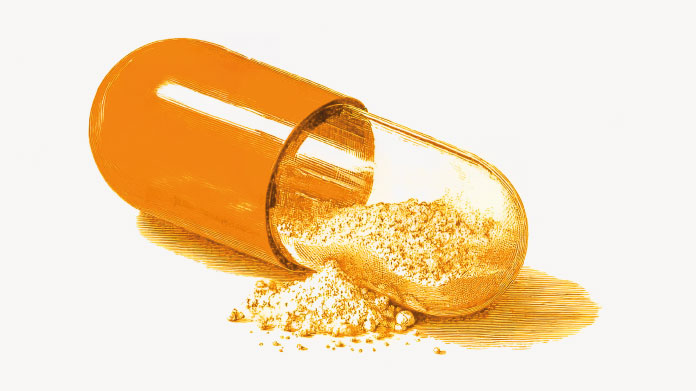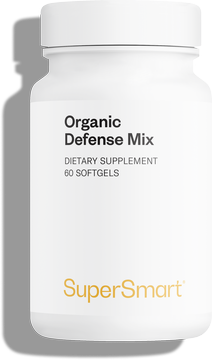The best autumn fruits and vegetables and our top tips on how to get the most out of them
Eating seasonally is the perfect way of stocking up on health-beneficial micronutrients. As long as you choose the right foods and know just how to get the most benefit from them …
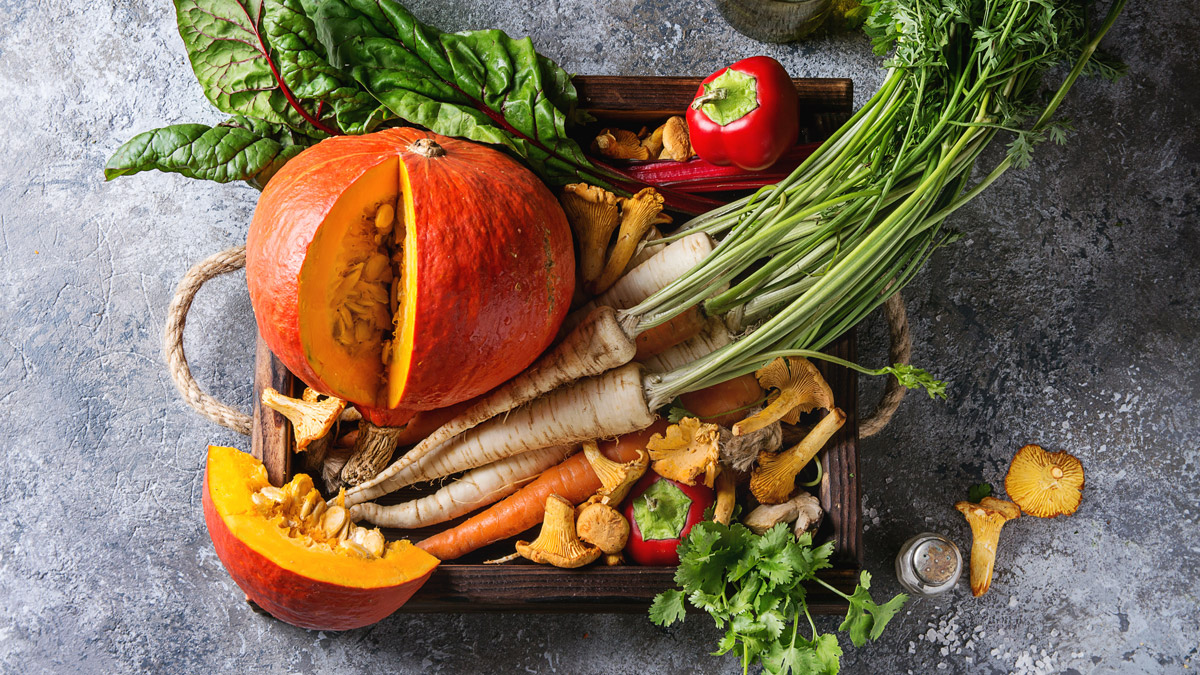
You probably know that eating out-of-season fruits and vegetables is highly damaging to the environment. Producing and transporting them from the other side of the world involves significant greenhouse gas emissions. Often, production closer-to-home in greenhouses is even more energy-intensive: local, out-of-season tomato production under glass requires 11 times more energy than the same crop grown outdoors.
But eating seasonal fruits and vegetables is not just good for the environment: it also has a direct impact on your health. Micronutrient content is at its highest when products are grown in season, in the period to which they’re best adapted. Simple factors such as length of sun exposure, maximum range of temperatures, heat and humidity are key to their micronutrient content, and thus their flavor! Just as organic farming methods enable fruits to deploy more antioxidant defenses against pathogens in the absence of pesticides.
So to stay healthy throughout the autumn season, it makes absolutely no sense to rush out and buy tropical fruits, you simply need to choose from the following list …
Artichokes
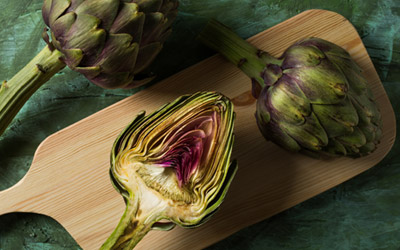 Artichokes are quite expensive but it’s well worth eating them when they’re in season. They contain a wide variety of antioxidants, particularly phenolic compounds such as chlorogenic acid, narirutin and cynarin (1), as well as anthocyanins that combat oxidative stress. However, their main benefit is their high content in silymarin. With this valuable nutrient, artichokes help:
Artichokes are quite expensive but it’s well worth eating them when they’re in season. They contain a wide variety of antioxidants, particularly phenolic compounds such as chlorogenic acid, narirutin and cynarin (1), as well as anthocyanins that combat oxidative stress. However, their main benefit is their high content in silymarin. With this valuable nutrient, artichokes help:
- protect the liver against certain adverse effects;
- regenerate liver cells damaged by the use of certain medicines and toxic substances such as alcohol, tobacco and drugs;
- stimulate protein synthesis in the liver, enabling damaged cells to be replaced more quickly by healthy cells;
- promote bile flow (2).
They also contain a number of prebiotics such as inulin. This polysaccharide is indigestible by the body but is instead consumed by gut flora. It stimulates the growth of certain beneficial bacteria in the gut which helps improve nutrient absorption and has a positive effect on the immune system.
What should you look for when buying artichokes and how should they be stored for maximum benefits?
Choose artichokes with tightly-closed leaves, brittle to the touch and free from black spots (a sign they’re not fresh).
Keep them refrigerated, for a few days at most, preferably in an airtight bag, after first sprinkling them with water to keep them moist.
Chard
Chard is a not a particularly well-known vegetable. Its stalks taste rather like those of beetroot though its leaves are more like spinach. A vegetable with a lot of flavor, it contains a significant level of vitamin K, which has recognized effects on bone health and blood coagulation. It also contains iron and insoluble fibre which prevent constipation and help to regulate intestinal transit.
What should you look for when choosing chard and how should it be stored to provide maximum benefits?
Opt for the red-stalked rather than white-stalked variety and choose chard with dark green leaves. Keep it in the vegetable compartment of your refrigerator. When it’s time to cook it (cooking does not affect its antioxidant capacity as long as you don’t fry it [3]), consider separating the leaves from the stalks as their cooking times are different.
Beetroot
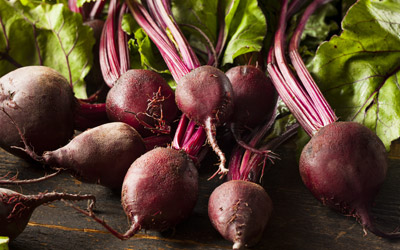 While beetroot may not the most popular vegetables on the shelf, it is nonetheless a remarkable health food, with one of the highest levels of antioxidant potency (4).
While beetroot may not the most popular vegetables on the shelf, it is nonetheless a remarkable health food, with one of the highest levels of antioxidant potency (4).
It’s particularly beneficial for eye health as it contains lutein and zeaxanthin, two nutrients which are concentrated in the macula and which reduce the risk of macular degeneration. Of the 750+ carotenoids present in nature - 40 in the human diet - these are the only two to be taken up by the macula where they help to optimise acute daylight vision. Ensuring a good intake is essential since the body is unable to synthesise them.
Beetroot is also one of the rare vegetables to contain betalains, a group of powerful and highly-bioavailable antioxidants (ie, they enter the bloodstream with ease). Its antioxidant, anti-inflammatory and liver-protective properties are completely preserved after passing through the digestive tract. It also contains significant levels of vitamin K (such that it is not recommended for anyone taking anticoagulants) and flavonoids. The flavonoid content of fresh beetroot leaf juice is actually higher than that of spinach or broccoli juice, both of which are themselves excellent sources.
How should beetroot be stored and consumed to get the most out of it?
Keep your beetroot in the refrigerator in a breathable bag for one to two weeks. It can be eaten raw, peeled and grated, or cooked, though it should be left unpeeled to minimise nutrient loss. Rather than boiling, it can be roasted in the oven in a little olive oil for about an hour at 250°C.
Unlike many other vegetables, beetroot’s antioxidant potency is not reduced by cooking.
Broccoli
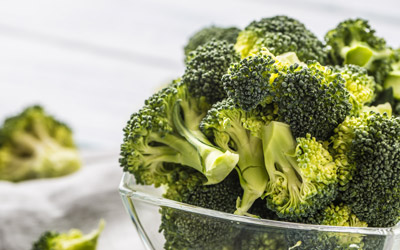 When eaten in season, broccoli has the highest vitamin C content of all the cruciferous vegetables. It offers countless health benefits (5-6).
When eaten in season, broccoli has the highest vitamin C content of all the cruciferous vegetables. It offers countless health benefits (5-6).
Most importantly, like most other crucifers, it contains glucosinolates which, on contact with human gut bacteria, are converted into anti-cancer compounds: sulforaphane, indole-3-carbinol and diindolylmethane (DIM). These are thought to offer three main benefits:
- They reduce the risk of hormone-dependent problems. In both women and men, they affect estrogen metabolism, thus helping to lower the risk of some hormone-dependent cancers, such as cancer of the breast, uterus and prostate.
- They improve benign prostatic hyperplasia (enlarged prostate). In men over 50, estrogen starts to accumulate in the prostate which contributes to its enlargement. DIM counteracts this by slowing down the metabolism of male reproductive hormone, and in particular, by preventing its conversion into estrogen. In this way, it improves prostate function and helps reduce the urge for night-time urination.
- They protect against cancer. Sulforaphane, indole-3-carbinol and DIM all prevent the growth of certain cancer cells and promote their self-destruction (in a process called apoptosis).
Broccoli also lowers the risk of cardiovascular disease due to its high levels of kaempferol (a flavonoid also present in tea). In addition, like beetroot, it contains lutein and zeaxanthin and thus supports healthy vision(7).
How should broccoli be stored and eaten to get the most out of it?
Choose broccoli with firm stalks and compact heads, avoiding any yellowing florets (as they will have a bitter taste). It’s a vegetable that doesn’t keep well: at the first sign of deterioration, it will have already lost more than half its antioxidant capacity (8). It should therefore be consumed as soon as possible after purchase.
To obtain maximum benefit, it’s best to eat it raw, or very lightly cooked. Over-cooking broccoli significantly reduces the formation of sulforaphane, but very light cooking deactivates a protein that impedes the conversion of glucoraphanin into sulforaphane. Be sure to eat the stalks! Peel and chop them so that they take the same amount of time to cook as the heads.
Some IBS sufferers may experience adverse effects from consuming crucifers such as broccoli (abdominal pain, bloating, diarrhea …). In such cases, it’s better to cut them out and then gradually reintroduce them to the diet, paying close attention to any symptoms and allowing for individual tolerance.
Cauliflower, kale, kohlrabi and red cabbage
These four cruciferous vegetables contain the same type of nutrients as broccoli. They are low in calories and also help prevent the development of cancer. .
Choose firm cauliflowers with tight florets and no brown spots. Florets that are spread out suggest the vegetable was harvested too late. Again, don’t throw away the stalks: peel and chop them so that they take the same amount of time to cook as the heads. To make cauliflower more digestible, it’s best to boil it for five minutes in salted water and drain well before dressing.
Kale is very rich in vitamin A: a 100g portion provides almost 100% of our daily requirements. Vitamin A plays a major role in regulating the immune system, the health of mucous membranes and the absorption of iron. Kale keeps longer in the ‘fridge than other crucifers. Take care to wash and dry the leaves before eating. It can be eaten raw, or cooked to your liking.
Kohlrabi has a pleasant, nutty taste when cooked. Rich in vitamin B6 (pyridoxin), essential for the production of brain neurotransmitters, as well as in B9 (folates), it contains significant levels of carotenoids. Don’t choose the biggest kohlrabi – the smaller the vegetable, the less fibrous it is. Keep it refrigerated in a breathable bag or somewhere cool.
Lastly, red cabbage is probably the best-known of these four vegetables. It is highly versatile: it can be eaten grated in a salad, cooked in a stew, fermented, used in a soup … It differs from other crucifers in its higher flavonoid content, particularly cyanidin. Keep it in the refrigerator in the vegetable compartment. To retain its colour, use a stainless knife to cut it. Cook it in a pan with just a small amount of water and a few drops of vinegar or lemon juice. Don’t throw away the heart: chop it finely to make it less fibrous and use it later to make stock. Attention: if it gives off a sulfurous smell, you’ve over-cooked it!
Watercress and spinach
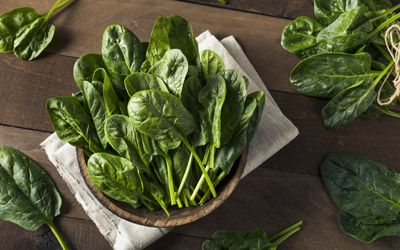 Watercress is also a crucifer and therefore contains flavonoids, carotenoids (vitamin A precursors), lutein and zeaxanthin, as well as quercetin! Along with onions, it’s actually one of the main dietary sources of quercetin, a phytonutrient that helps both reduce allergic processes and improve physical performance. Like broccoli and cabbage, it contains anti-cancer glucosinolates (9-10), but is also a source of calcium with exceptional bioavailability! Its absorption rate is around 70%, while that of milk and spinach is barely 30% and 5% respectively (11).
Watercress is also a crucifer and therefore contains flavonoids, carotenoids (vitamin A precursors), lutein and zeaxanthin, as well as quercetin! Along with onions, it’s actually one of the main dietary sources of quercetin, a phytonutrient that helps both reduce allergic processes and improve physical performance. Like broccoli and cabbage, it contains anti-cancer glucosinolates (9-10), but is also a source of calcium with exceptional bioavailability! Its absorption rate is around 70%, while that of milk and spinach is barely 30% and 5% respectively (11).
Of course spinach has other benefits. It’s a well-known source of iron, as well as a whole host of vitamins, minerals and antioxidants. These include ferulic acid and glycolipids (also found in green tea and parsley) both of which help prevent the development of cancer.
Spinach also contains betaine, a compound which helps treat certain types of liver dysfunction such as fatty liver and which also improves athletic performance. Spinach is actually one of the best dietary sources of betaine.
What’s the best way to store and eat these vegetables?
Choose spinach with crisp, shiny leaves, avoiding anything with wilted leaves or black spots. Opt for organically-grown varieties - spinach is one of the vegetables that shows the highest concentrations of pesticide residues. Keep it refrigerated, in a breathable bag, for a maximum of five days.
In terms of nutrition, it’s better eat it (lightly) cooked – it has almost six times more lutein, zeaxanthin and betaine than raw spinach (12)! The best way is to steam it for 1-2 minutes at most. Quickly squeeze out any water and eat as soon as possible.
Oyster mushrooms
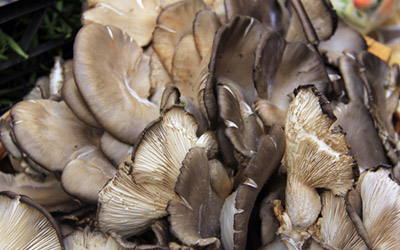 Mushrooms are like miniature pharmaceutical factories. Some of them, such as oyster mushrooms, offer unique combinations of health-beneficial properties. They contain phenolic compounds, in particular ergothioneine, an antioxidant amino acid that has a very long life in the body (13), as well as specific types of soluble fibre - beta-glucan and alpha-glucan polysaccharides. Scientific research has shown that these polysaccharides help activate various immune effector cells such as macrophages, Natural Killer cells, T lymphocytes, interleukin-1 and superoxide anions (14). Other studies have highlighted a blood sugar-lowering effect: by acting on pancreatic hormone receptors, alpha-glucan polysaccharides may increase cell sensitivity to pancreatic hormone and improve pancreatic hormone resistance in peripheral tissues. In binding to bile acids, they also help reduce cholesterol absorption in the gut, complementing the action of another natural compound found in mushrooms, used as a cholesterol-lowering drug.
Mushrooms are like miniature pharmaceutical factories. Some of them, such as oyster mushrooms, offer unique combinations of health-beneficial properties. They contain phenolic compounds, in particular ergothioneine, an antioxidant amino acid that has a very long life in the body (13), as well as specific types of soluble fibre - beta-glucan and alpha-glucan polysaccharides. Scientific research has shown that these polysaccharides help activate various immune effector cells such as macrophages, Natural Killer cells, T lymphocytes, interleukin-1 and superoxide anions (14). Other studies have highlighted a blood sugar-lowering effect: by acting on pancreatic hormone receptors, alpha-glucan polysaccharides may increase cell sensitivity to pancreatic hormone and improve pancreatic hormone resistance in peripheral tissues. In binding to bile acids, they also help reduce cholesterol absorption in the gut, complementing the action of another natural compound found in mushrooms, used as a cholesterol-lowering drug.
They even act against tumors by up-regulating expression of a gene that contributes to cancer cell self-destruction (BAK-1) (15-16).
What should you look for when buying oyster mushrooms and how should they be consumed?
They should not be too viscous, but firm and fleshy. They should be light in colour with no spots, and give off a slight aniseed aroma. Avoid washing them in lots of water but instead wipe them with a moist cloth and remove any damaged parts. Oyster mushrooms are highly perishable: eat them as soon as possible after collecting or buying. If you keep them in the ‘fridge, put them in an open container or bag to let them breathe.
Chop the firmer stalk parts, and cook them for a few minutes before adding the caps. Let them sweat on a gentle heat, and once they release water, add a nob of butter or a little oil and increase the heat. You can also add garlic and parsley to the pan.
Potatoes and turnips
The humble potato may seem a very ordinary vegetable but it is still good for our health. It contains phenolic acids (chlorogenic acid), catechins and vitamin C, as well as fibre and complex carbohydrates (starch). It also contains a lectin called Solanum Tuberosum Lectin that helps inhibit the growth of certain cancer cells. .
If you can, opt for coloured flesh varieties as they’re higher in antioxidant micronutrients. Always store them in a cool, dark place away from humidity. Don’t put them in the ‘fridge as the starch will gradually turn to sugar. Throw away any with green patches – it’s a sign they contain toxins called alkaloids (solanine and chaconine) which develop when potatoes are kept in the light or at too high a temperature. They can cause a number of unpleasant symptoms: sweating, gastrointestinal upsets, tingling …
Turnips do not enjoy the same popularity as potatoes even though they’re easy to prepare and go well with a wide variety of foods. In fact, they can be served in the same way as potatoes: mashed, roasted, boiled, sautéed, or as chips … They can even be eaten raw, grated into salads. Turnip roots should be stored in the ‘fridge or another cool place.
Radishes
Like turnips and broccoli, radishes are also crucifers: they therefore contain glucosinolates which are converted into isothiocyanates, beneficial in cancer prevention. They also contain precious antioxidants like anthocyanins and kaempferol, both of which are able to reduce tumor formation and growth of cancer cells. The radish’s high content in vitamin C (120mg per 100g) and raphanin, a compound with powerful anti-bacterial and antiseptic properties, makes it a good choice for preventing early winter infections …
How should you eat radishes to get the most out of them?
Try to choose firm, smooth, shiny radishes. Press the flesh and discard any that don’t resist pressure. Keep them for a maximum of a week in the ‘fridge in a cloth bag, or perhaps in a container filled with water. Plunge them into iced water for half an hour before eating to bring out their crunch.
Pumpkin and winter squash
Winter squash are invaluable for health. They contain a panoply of nutrients (lutein, zeaxanthin, beta-carotene, vitamin A, iron, manganese, copper, and vitamins B2, B5, B6, B9, and C) and at the same time, are low in calories and high in fibre. They too provide protection against cancer as a result of their high content in cucurbitacins, a group of compounds that slow down the growth of cancer cells (17).
Choose firm squash, with no blemishes or cracks. They’ll last for several weeks if kept in a cool, dry place, but don’t refrigerate them – it’s too damp.
Don’t discard the seeds: they’re recognized for relieving symptoms of enlarged prostate and problems with micturition (urge to urinate, hyperactive bladder, night-time waking …). Their high content of unsaturated fatty acids, zinc and phytosterols is probably responsible for these benefits (studies are ongoing to establish the precise mechanisms of action). For maximum benefit, they’re best eaten raw rather than roasted (10 grams a day) but take care to chew them thoroughly. Keep them refrigerated as they tend to become rancid quickly.
Apples and pears
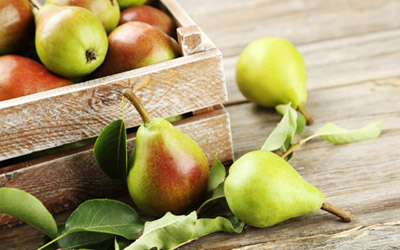 Apples and pears are very high in flavonoids and antioxidant phenolic acids, especially their peel. They contain a large amount of fibre, most of which is insoluble, which means they improve intestinal transit and help reduce the risk of cardiovascular disease. They also contain pectin which helps increase cholesterol elimination via the stools, and this is even more effective when combined with the flavonoids present in the fruits’ juice. Apples also contain specific polyphenols which have demonstrated benefits for blood cholesterol levels and for reducing damage to blood vessels.
Apples and pears are very high in flavonoids and antioxidant phenolic acids, especially their peel. They contain a large amount of fibre, most of which is insoluble, which means they improve intestinal transit and help reduce the risk of cardiovascular disease. They also contain pectin which helps increase cholesterol elimination via the stools, and this is even more effective when combined with the flavonoids present in the fruits’ juice. Apples also contain specific polyphenols which have demonstrated benefits for blood cholesterol levels and for reducing damage to blood vessels.
Nowadays, these fruits are available all year round but it’s really in autumn that they’re most health-beneficial as they’ve been able to ripen on the tree.
What should you look for when buying apples and pears and how should they be stored?
If possible, opt for organic varieties: studies show that organically-grown apples and pears have higher levels of phenolic compounds than their non-organic equivalents. Organic growing methods allow apple and pear trees to deploy more antioxidant defenses against pathogens than those sprayed with pesticides.
However, don’t eat too many pears: they contain sorbitol and fructose, two sugars that can cause mild gastrointestinal problems when over-consumed by those sensitive to them. Keep your apples and pears cool, as they carry on ripening when stored at room temperature and lose their flavor. Put them in the vegetable compartment in the ‘fridge, perhaps in a breathable bag.
Nuts
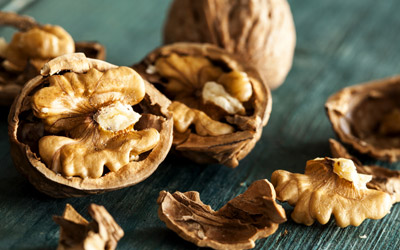 The nut is a fruit with a husk (or shell) and an exceptionally high content of polyunsaturated fatty acids (over 70% of its total lipids), particularly omega-3, of which the benefits for heart health are well-established. It also contains the perfect ratio of omega-3 and omega-6 fatty acids. Gradually replacing saturated fats with omega-3 fatty acids helps make cell membranes more fluid and improves an astonishing number of physical and mental health issues (cognitive decline, mood problems, inflammatory diseases, cardiovascular disorders …) (18-21).
The nut is a fruit with a husk (or shell) and an exceptionally high content of polyunsaturated fatty acids (over 70% of its total lipids), particularly omega-3, of which the benefits for heart health are well-established. It also contains the perfect ratio of omega-3 and omega-6 fatty acids. Gradually replacing saturated fats with omega-3 fatty acids helps make cell membranes more fluid and improves an astonishing number of physical and mental health issues (cognitive decline, mood problems, inflammatory diseases, cardiovascular disorders …) (18-21).
Nuts also contain large amounts of ellagic acid, a remarkable antioxidant that combats the spread of certain cancer cells. They have other phenolic compounds too (such as gallic acid) which help prevent LDL cholesterol in the blood from becoming oxidised, a key factor in the development of artery-blocking atheromatous plaques.
Another important benefit is their amino acid composition..
Nuts contain much more arginine than animal protein sources. And arginine is the amino acid from which the body produces nitric oxide, a substance that promotes dilation of blood vessels. In this way, nuts also help optimise blood flow.What should you look for when buying nuts and how should they be stored?
From their appearance, you’d assume that nuts could be kept for weeks and weeks without a problem. But appearances can be deceptive, as in reality, their vitamin E and omega-3 content declines very fast, especially when you buy them already shelled.
It’s therefore best to buy them in their shells and keep them refrigerated to prevent their fatty acids from becoming oxidised and rancid. They’re best eaten raw, but they can also be roasted in their shells in the oven at 190°C for 20 minutes. Unless you don’t like the strong taste, keep the thin brown skin that surrounds the nut as it’s here where most of the phenolic compounds are concentrated!
Though fruits and vegetables are perhaps a little less colourful in autumn than in summer, their health benefits are just as impressive. So go ahead - pile them onto your plate, and don’t stop at five-a-day – this is just the minimum to aim for to enjoy good health.
It’s also worth knowing that you can find the majority of the micronutrients mentioned in this article in our dietary supplements, at much higher doses than those found in food:
- Sulforaphane in our broccoli sprout extract.
- Glucosinolates (DIM and I3C) in the excellent supplement Cruciferous Detox Formula
- Apple polyphenols in our standardized apple extract.
- Alpha- and beta-glucan polysaccharides in our super-complex of 7 medicinal mushrooms.
- Oyster mushroom ergothioneine in our supplement L-Ergothioneine 5 mg.
- Detoxifying silymarin in the famous Silyplus.
- Lutein for visual function in the supplement Lutein 20 mg.
- Anti-allergy and cardio-protective quercetin in Super Quercetin 500 mg
- Cholesterol-lowering ellagic acid in the supplement Double Pomegranate
- Omega-3 fatty acids in the unbeatable Super Omega 3 for healthy heart and brain function.
References
- Wang M, Simon JE, et al. Analysis of antioxidative phenolic compounds in artichoke (Cynara scolymus L.). J Agric Food Chem 2003 January 29;51(3):601-8.
- Aggarwal BB, Shishodia S. Molecular targets of dietary agents for prevention and therapy of cancer. Biochem Pharmacol 2006 February 23.
- Jimenez-Monreal AM, Garcia-Diz L, et al. Influence of Cooking Methods on Antioxidant Activity of Vegetables. J Food Sci. 2009 Apr;74(3):H97-H103.
- Clifford, T., Howatson, G., West, D., & Stevenson, E. (2015). The Potential Benefits of Red Beetroot Supplementation in Health and Disease. Nutrients, 7(4), 2801–2822. doi:10.3390/nu7042801
- Ambrosone CB, McCann SE, et al. Breast cancer risk in premenopausal women is inversely associated with consumption of broccoli, a source of isothiocyanates, but is not modified by GST genotype. J Nutr 2004 May;134(5):1134-8.
- Jeffery EH, Jarrell V. Cruciferous vegetables and cancer prevention. In: Wildman REC, editor. Handbook of Nutraceuticals and Functional Foods.Boca Raton: CRC Press; 2001. p. 169-91.
- Sommerburg O, Keunen JE, et al. Fruits and vegetables that are sources for lutein and zeaxanthin: the macular pigment in human eyes. Br J Ophthalmol 1998 August;82(8):907-10.
- Kevers C, Falkowski M, Tabart J et al. (2007) Evolution of antioxidant capacity during storage of selected fruits and vegetables. Journal of Agricultural and Food Chemistry 55, 8596-8603.
- Rose P, Faulkner K, et al. 7-Methylsulfinylheptyl and 8-methylsulfinyloctyl isothiocyanates from watercresss are potent inducers of phase II enzymes. Carcinogenesis 2000 November;21(11):1983-8.
- Miller GD, Jarvis JK, McBean LD. The importance of meeting calcium needs with foods. J Am Coll Nutr 2001 April;20(2 Suppl):168S-85S.
- Zeisel SH, Mar MH, et al. Concentrations of chol.-containing compounds and betaine in common foods. J Nutr 2003 May;133(5):1302-7.
- Dubost NJ, Ou B, Beelman RB. Quantification of polyphenols and ergothioneine in cultivated mushrooms and correlation to total antioxidant capacity. Food Chemistry 2007
- Adachi K, Nanba H, Kuroda H. Potentiation of host-mediated antitumor activity in mice by beta glucan obtained from Grifola frondosa (maitake). Chem Pharm Bull 1987;35:262-70.
- Joseph S, Sabulal B, George V, Antony KR, Janardhanan KK. Antitumor and anti-inflammatory activities of polysaccharides isolated from Ganoderma lucidum. Acta Pharm. 2011 Sep 1;61(3):335-42.
- Chen HS, Tsai YF, Lin S, et al. Studies on the immuno-modulating and anti-tumor activities of Ganoderma lucidum (Reishi) polysaccharides. Bioorg Med Chem. Nov 1 2004;12(21):5595-5601.
- Garg, S., Kaul, S., & Wadhwa, R. (2017). Cucurbitacin B and cancer intervention: Chemistry, biology and mechanisms (Review). International Journal of Oncology. doi:10.3892/ijo.2017.4203
- D. S. D. Martin, P. Spencer, D. F. Horrobin, et M. A. Lynch, « Long-term potentiation in aged rats is restored when the age-related decrease in polyunsaturated fatty acid concentration is reversed », Prostaglandins Leukot. Essent. Fatty Acids, vol. 67, no 2 3, p. 121 130, 2002.
- M. Lavialle, G. Champeil-Potokar, I. Denis, P. Guesnet, F. Pifferi, et S. Vancassel, « Le DHA dans la neurotransmission », Ol. Corps Gras Lipides, vol. 14, no 1, p. 11 15, 2007.
- S. Hossain, M. Hashimoto, M. Katakura, T. Shimada, et O. Shido, « Mechanism of docosahexaenoic acid-induced inhibition of in vitro Aβ1-42 fibrillation and Aβ1-42- induced toxicity in SH-S5Y5 cells », J. Neurochem., vol. 111, p. 568 579, 2009.
- U. Gogus et C. Smith, « n-3 Omega fatty acids : a review of current knowledge », Int. J. Food Sci. Technol., vol. 45, p. 417 436, 2010
Keywords
5 Days
Great customer service - responsive …
I ordered from them and my item was unavailable for sometime. I was super happy when they reactivated my order and shipped my item which arrived very quickly. Great customer service.
Ruth Rueter
6 Days
Super fast shipping
Super fast shipping
Donald Borling
9 Days
Reputable companysearch and the number of…
The research and the number of selection of products.
NAKHJAVAN Shervin
22 Days
The Anti Aromatase is a great product
The Anti Aromatase is a great product. You just need to have constant inventory. Recently this product has been out of stock.
GEORGE Verne
24 Days
Great help on chat
Great help on chat. Knowledgeable and friendly.
Jason Argos
27 Days
Customer service was fast and friendly.
Customer service helped to stop the transaction process of the subscription. I appreciated that.
Greenie
27 Days
I order here due to the high quality of…
I order here due to the high quality of the products and the quick delivery of items - thank you
Barbara J
29 Days
SuperSmart's Eye Pressure supplements: highly recommended!
I purchase SuperSmart's Eye Pressure supplements regularly for over 5 years, and gotta say they are truly a wonderful product for my Glaucoma. Highly recommended if you have eye pain from your Glaucoma.
D. Martinez
33 Days
Quick service
Quick service
MONELL
34 Days
Speedy service.
Speedy service.
ROSENTHAL Marvin
38 Days
Clear website- Efficient
Clear website. Excellent search engine and fast delivery!
Mohamad Hussein
40 Days
They have great products.
They have great products.
Vickie
40 Days
Great Shipping Time!
You Have A Great Shipping Time! Praise The Lord!
DMHoge
42 Days
Doctor Recommended!
Good pricing, very good availability, doctor recommended (couldn't find what I needed anywhere else), and it took only a week to arrive (which I can't complain about).
Al
43 Days
Great product and fast shipping
Great product and fast shipping
Marie

